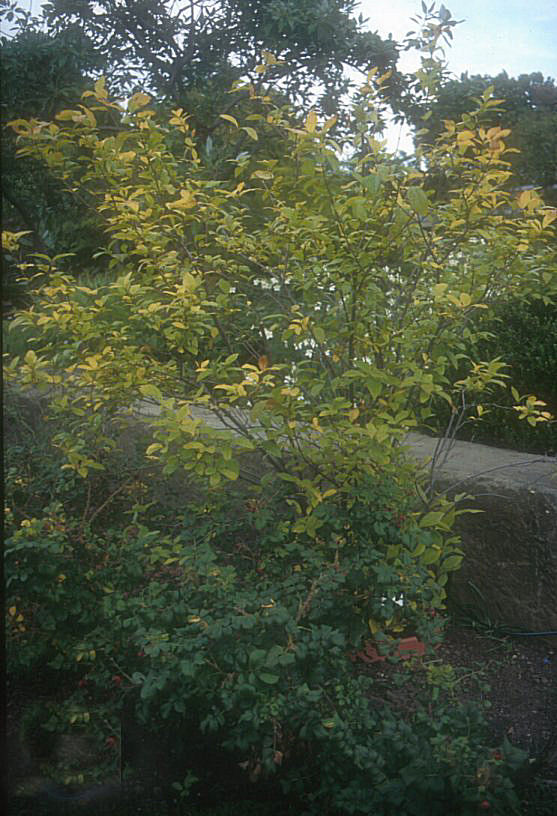| Botanical Name: Calycanthus floridus | |
| Common Name: Carolina Allspice |

-
Anatomy
-
Culture
-
Design
Plant Type
Shrub
Height Range
6-12'
Flower Color
Red
Flower Season
Spring
Leaf Color
Dark Green
Bark Color
Brown, Grey
Fruit Color
Brown
Fruit Season
Summer, Fall, Persistent
Sun
Full, Half
Water
Medium, Extra in Summer
Growth Rate
Moderate
Soil Type
Clay, Loam
Soil Condition
Average, Rich, Poor, Well-drained
Soil pH
Acid, Neutral, Basic
Adverse Factors
n/a
Design Styles
English Cottage, Formal, Ranch, Woodland
Accenting Features
Fall Color, Fragrance, Showy Flowers
Seasonal Interest
Spring, Summer, Fall
Location Uses
Background, Shrub Border, Foundation, Patio, Walls / Fences
Special Uses
Cut Flowers, Hedge, Screen, Naturalizing
Attracts Wildlife
n/a
Information by: Stephanie Duer
Photographer:
Photographer:
-
Description
-
Notes
Carolina allspice is a dense, rounded deciduous shrub with a suckering habit which grows 6 to 9 feet tall with an equal or slightly greater spread. Very fragrant, brown to reddish-brown flowers (2" across) bloom at the ends of short branchlets in May. Flowers give way to brownish, urn-shaped fruits (seed capsules) which mature in fall and persist throughout the winter. Lustrous leaves are dark green above, paler beneath, oval to elliptic, and turn golden yellow in fall. Leaves are aromatic when bruised. Best to purchase this plant when in flower because the quality and intensity of the fragrance can vary widely from plant to plant.
Grow in well-drained soil in full sun to part shade. Grows somewhat taller in shade than in sun. Tolerant of a wide range of soils, but prefers rich loams. Prune immediately after flowering to shape or maintain compactness. Tends to sucker and often forms colonies in the wild; remove root suckers promptly if spreading isnot desired.